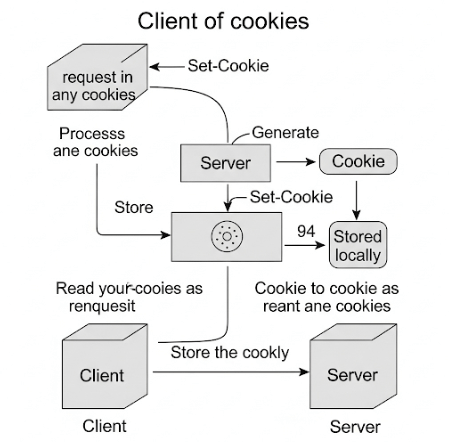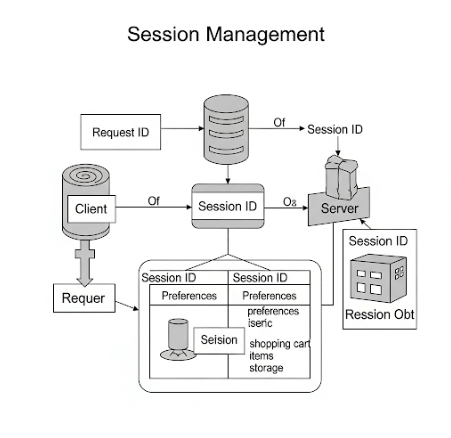Using Cookies and Sessions: Maintaining State in Servlets
Hello everyone! The stateless nature of the HTTP protocol presents a significant challenge for web applications that need to remember user interactions across multiple requests. This is precisely why techniques like Using Cookies and Sessions become indispensable, allowing Servlets to maintain state and provide a continuous, personalized experience for users. Understanding these mechanisms is crucial for building robust and interactive web applications.
The Challenge of Stateless HTTP
HTTP, by its very design, is a stateless protocol. This means that each request from a client to a server is treated as an independent event, with no memory of previous interactions. For example, if a user adds items to a shopping cart, then navigates to another page, the server inherently “forgets” the items in the cart with each new request. Therefore, to build practical web applications that can recognize users and track their activities, developers must employ state management techniques. Primarily, Using Cookies and Sessions effectively addresses this fundamental challenge.
Method 1: Using Cookies
A Cookie is a small piece of information that a web server sends to a user’s web browser, and the browser stores it. Subsequently, the browser sends this cookie back to the server with every subsequent request until the cookie expires or is deleted. This mechanism allows the server to recognize the user across different pages and requests.
How Cookies Work in Servlets:
- Creating a Cookie: A Servlet creates a
Cookieobject usingnew Cookie(name, value). - Setting Attributes: You can set various attributes, such as
setMaxAge()(for persistence),setPath(), etc. - Adding to Response: The Servlet adds the cookie to the HTTP response using
response.addCookie(cookie). - Retrieving Cookies: On subsequent requests, the Servlet retrieves cookies from the
HttpServletRequestobject usingrequest.getCookies(), which returns an array ofCookieobjects. You then iterate through this array to find the desired cookie by its name.
Example: Setting and Retrieving a Cookie
Java
// Setting a cookie
Cookie userCookie = new Cookie("username", "JohnDoe");
userCookie.setMaxAge(60 * 60 * 24); // 24 hours
response.addCookie(userCookie);
// Retrieving a cookie
Cookie[] cookies = request.getCookies();
if (cookies != null) {
for (Cookie cookie : cookies) {
if ("username".equals(cookie.getName())) {
String username = cookie.getValue();
// Use the username
System.out.println("User from cookie: " + username);
break;
}
}
}
Thus, cookies provide a simple way to maintain small amounts of user-specific data on the client side.
Method 2: Using Sessions (HttpSession)
While cookies store data on the client, Sessions (specifically HttpSession in Servlets) store user-specific data on the server side. A session represents a unique interaction between a client and a web application over a period of time. When a user first interacts with the application, a session is created, and a unique session ID is generated and sent to the client (often as a cookie). The client then sends this session ID with every subsequent request, allowing the server to retrieve the corresponding session object and its stored data.
How Sessions Work in Servlets:
- Getting or Creating a Session: A Servlet obtains an
HttpSessionobject usingrequest.getSession(true)(creates a new one if it doesn’t exist) orrequest.getSession(false)(returns existing or null). - Storing Data: You store objects in the session using
session.setAttribute(name, value). - Retrieving Data: You retrieve objects using
session.getAttribute(name). - Invalidating Session: You can explicitly end a session using
session.invalidate().
Example: Storing and Retrieving Session Data
Java
// Getting/Creating a session
HttpSession session = request.getSession(); // true by default
// Storing data in session
session.setAttribute("userRole", "admin");
session.setAttribute("loginTime", System.currentTimeMillis());
// Retrieving data from session
String role = (String) session.getAttribute("userRole");
Long loginTime = (Long) session.getAttribute("loginTime");
if (role != null) {
System.out.println("User Role: " + role);
}
Evidently, sessions are ideal for storing more complex or sensitive user data that should not be exposed on the client side.


For comprehensive Javadoc documentation on the jakarta.servlet.http.Cookie class, consult the Jakarta Servlet API Javadoc for Cookie
